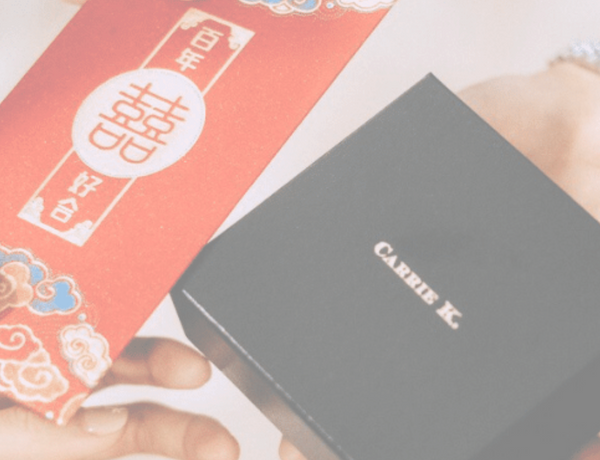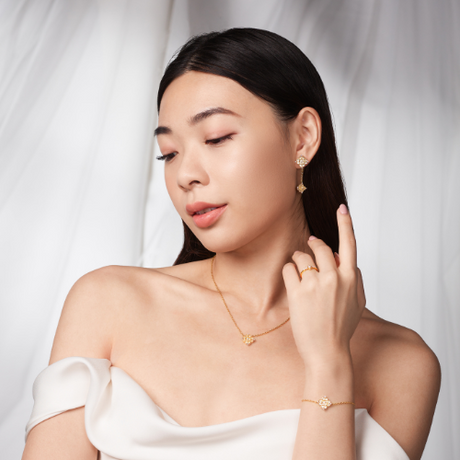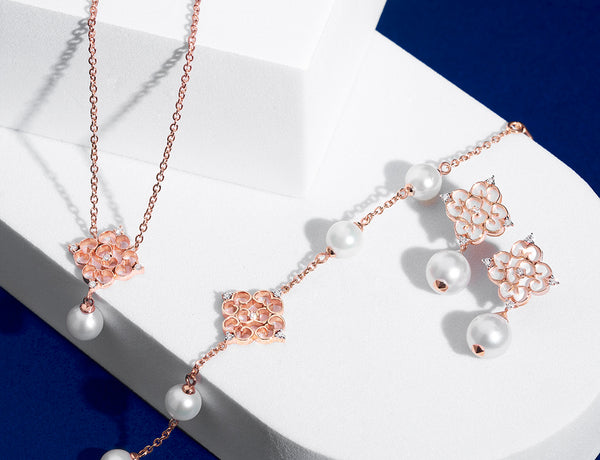(Image Source: Bridal Musings)
Planning for one of the most important traditions in a Chinese wedding, the Tea Ceremony, can be stressful. Here is where we spill the tea on what you need to know to get started!
So what is a Tea Ceremony?
The Tea Ceremony is hosted on the day of the wedding where the newlyweds show their respect to the elders in their families, and they in turn show their acceptance of the marriage. This will normally be held either at the couple’s respective family homes or where the wedding venue may be.
Usually dressed in traditional wedding attire, the couple will kneel before their parents first and serve them tea with the help of the attendants (usually bridesmaids), followed by the in-laws and other family members (grandparents, aunts, uncles). This signifies the union of two individuals and their families.
Traditionally, the eldest and the groom’s family is served first, but it’s common to alternate between both families after each round.

(Image Source: iStock Photo, Hxyume)
Tea Ceremony Check List
1. Decide where to have it.
Depending on the convenience of your wedding plans, you may plan it at home, hotel, garden and more!
2. Decide a time for it.
You may decide to host this the day before, during or after your wedding day.
3. Plan your outfits.
This depends on the style you are going for. For the bride, you may wear a red cheongsam or the Qun Kwa while the groom may wear the Qua Kua or other traditional outfits.
4. Create a guest list and determine the order.
This list will include all the relatives you and your groom wish to serve.
5. Invest in decorations and tea supplies.
Double happiness backdrops, red lanterns, table cloth, and flowers are lovely decorations to have on the day of your Tea Ceremony. With teas, the most common flavours are oolong, black and puerh tea, however, you may ask your relatives what are their favourite teas.Practise the traditional etiquette and set up in advance.
The usual setup would be placing two chairs or a bench in front of them, adding the kneeling pillows and having a table nearby to hold all the tea supplies. Hold the cup with both hands and practice saying your relative’s names and the wishes in Chinese if you plan to say it!
6. Practise the traditional etiquette and set up in advance.
The usual setup would be placing two chairs or a bench in front of them, adding the kneeling pillows and having a table nearby to hold all the tea supplies. Hold the cup with both hands and practice saying your relative’s names and the wishes in Chinese if you plan to say it!

Tea Ceremony: Your Questions, Answered.

(Image Source: East Meets Dress)
1. Where should the ceremony take place?
Traditionally, the Tea Ceremony is hosted at the bride’s family home in the morning where her groom will pick her up after the ceremony is completed. They will then travel back to his family home and have the Tea Ceremony there to0.
However, you do not have to follow this strictly. You may plan the location elsewhere (banquet, hotel, home), considering the convenience of your wedding plans.
2. What time should I host the ceremony?
For many couples, wedding day activities are usually organised around an auspicious timing. These timings are based on their Chinese almanack. To find out the timings, they will have to seek a consultation with a Feng Shui specialist.
3. Who will attend the Tea Ceremony?
Close family members are normally present such as the grandparents, parents, aunts, uncles, brothers and sisters. The bridesmaids will also need to be there to help carry out the roles as attendants - making the tea, passing the cups over to the newlyweds and washing the teaware.

4. Is there a specific tea I need to get?
You may ask your relatives what their preference is for tea flavours as there are no specific rules to this however, the regular ingredients to add to the tea are red dates, lotus seeds and lily. Red dates symbolise luck, lotus seeds represent the arrival of children and finally, the Chinese name of the lily rhymes with an expression of longevity in marriage.
5. What order do you serve in?
Today’s modern brides can choose whether her family or her groom’s family will go first based on their wedding activities. It is also okay to alternate families between each round.
Next, you will have to serve the parents first, followed by the grandparents and the rest of the family in order of seniority.
6. Does both the newlyweds serve the tea?
Yes! The groom will kneel on the right side and serve the tea while the bride kneels on the left side and goes right after him. The couple will both serve the tea to the same person.
7. What should you say when you are serving the tea?
Depending on who you are serving, you will need to refer to the relationship of the relative first. For example, “Dad, please drink the tea.” This is said in Mandarin or Cantonese.
8. What is the usual tea etiquette?
You need to kneel while serving the tea. You may even kneel with your heads touching the ground as a sign of respect. Some couples choose to do this only for their parents while serving the tea, but this is something that will need consensus with their families.
Ultimately, it would be best to have a private discussion with both the parents of the bride and groom before moving ahead with what you have in mind.
9. Do the tea drinkers have to finish their tea?
This is not a requirement and there is no bad luck connected to this.
10. Who holds the tea? How much tea and cups should I prepare?
Your Maid of Honour will be next to the newlywed couple. She/he will carry a serving tray containing cups filled with tea. After each round, the Maid Of Honour will bring a new and clean set of cups filled with tea again.
Per pairing, you will need to allocate 4 cups and prepare enough tea to make 3 pots of tea.
11. What happens after the tea ceremony?
Once the ceremony is coming to an end, the parents will offer a few wishes and wise words, then give them red envelopes containing cash. This is a symbol of good fortune and luck.
The groom’s parents will offer gold jewellery, also known as Si Dian Jin. The bride will need to wear the jewellery right away. Otherwise, it can be seen as rude or if the bride doesn’t like them.

In short, Si Dian Jin is a cherished tradition from the olden times when houses in the Teochew provinces had 4 curved rooftops that looked like the umbrella-shaped mandarin character “Jin”.
A 4-piece betrothal jewellery set (Si Dian Jin) is given to the bride by the groom’s mother. This means welcoming her into the new family, promising that she will always have a roof over her head and will be taken care of. If you would like to read more about this special tradition, click here.
The traditional Si Dian Jin set was usually chosen in 24k solid gold. In recent years, brides prefer their jewellery set to be versatile, wanting to wear them for different occasions. Hence, why we design our Si Dian Jin jewellery to not only be imbued with meaningful stories and Asian heritage but also be versatile enough to look grand enough on your special day, but be suitable for every day after.

We have created different designs to fit different styles, personalities and occasions. Click here to check out the whole range.



